Do you have bowing foundation walls? If the answer is yes, you’re in the right place! Bowing foundation walls should be taken seriously. If left alone, you risk the safety of your home and family. But don’t worry, this article teaches you how to repair and prevent bowing foundation walls.
What Are Bowing Foundation Walls?
“Bowing” means that your foundation wall is curving inward, like an archer’s bow. At the center of the bowing wall, you may even notice a long horizontal crack. Or, if you have a concrete block wall, the bowing could cause stair-step cracks instead. These types of wall cracks can even open and close depending on the weather conditions. They could open when it’s raining and close when the soil dries, or vice versa.
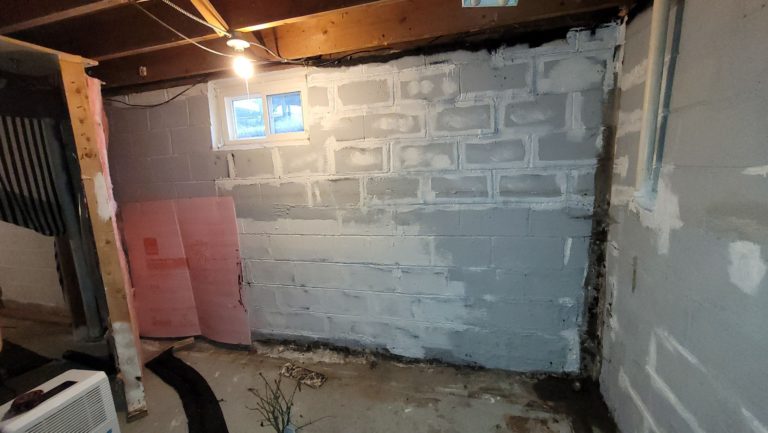
What Causes Bowing Foundation Walls?
Below are some common causes of bowing foundation walls.
- Expansive soil – If the soil outside your foundation wall is made of a lot of clay, it is considered expansive soil. Clay-rich soil will expand when it’s wet and shrink when it dries. The constant growing and shrinking cycle places stress on your foundation walls and can cause them to bow, crack, lean, or sheer. The American Society of Civil Engineers estimates that 1/4 of all homes in the United States have been in some way damaged by expansive soils.
- Hydrostatic pressure – If you don’t have a proper drainage system in place, water can pool up at the base of your foundation and cause loads of problems. One of those problems is hydrostatic pressure. As water collects and builds in your soil, the volume of the soil increases. This increase exerts pressure on your foundation walls and could cause them to bow.
- Frost-heaving – When soil freezes, it rises. Then, when it thaws, the soil settles back down. If the soil around your basement constantly rises and falls, your basement walls could bow.
- Lateral pressure – If a heavy object, such as a dump truck is parked alongside your home, your foundation walls could bow.
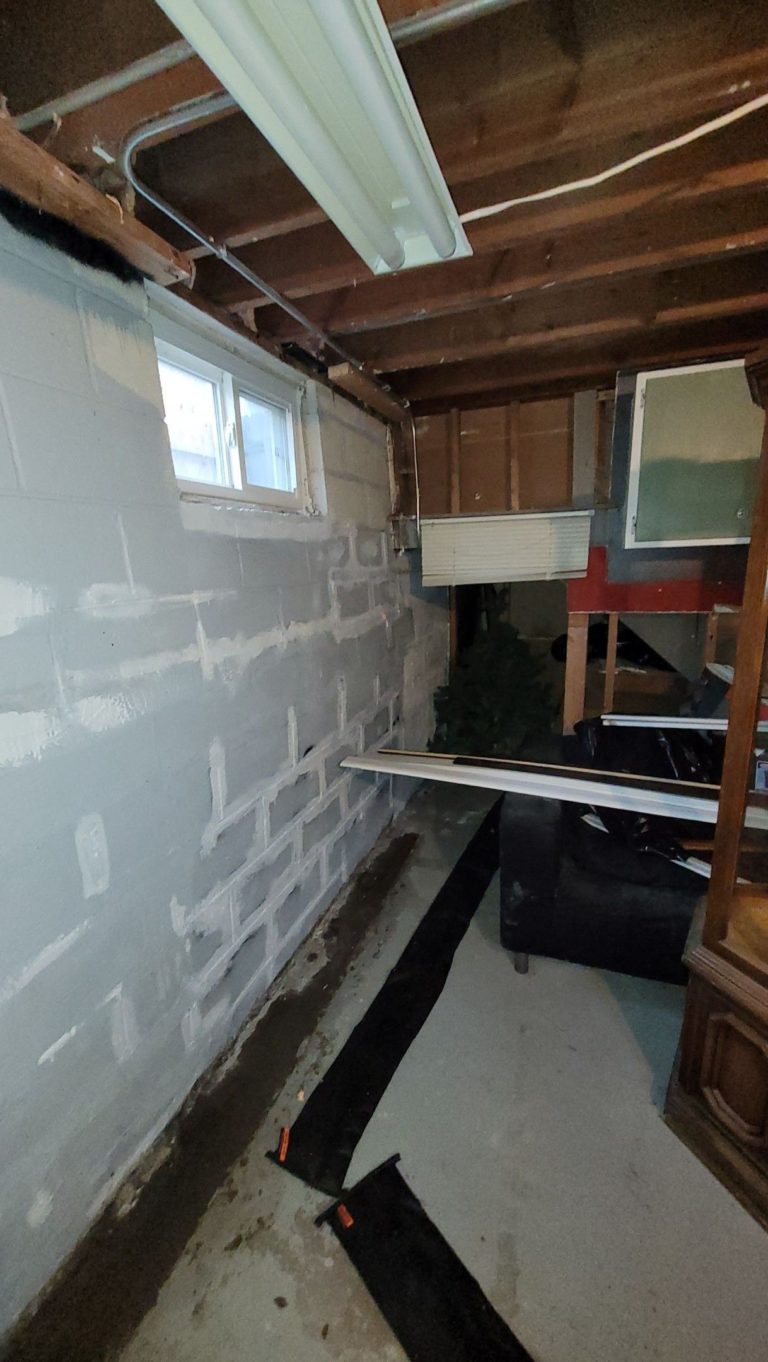
How To Repair Bowing Foundation Walls
Below are the most common ways professionals repair bowing foundation walls.
Wall Plate Anchors
Wall plate anchors are used to take pressure off the wall and distribute it into the yard. This will prevent the wall from bowing even more.
- First, an inside wall plate is attached to the bowing wall (placed every 5 feet from the middle of one plate to the next).
- Then, an anchor is placed in the dirt outside your foundation.
- Lastly, a high-strength rod connects the plate and anchors together, pulling the bowing wall outward.
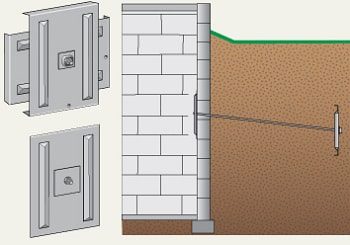
As one of the most economical foundation repair methods, wall plate anchors are installed using portable equipment, causing very little damage to your home.
C-channel Anchors
These anchors are commonly used to correct sheering* walls, helping distribute the load across the whole vertical length of the foundation wall. These anchors can be torqued to straighten or stabilize the wall over time.
C-channel anchors work in four steps.
- First, a large steel beam is attached to the bowing wall (placed every 4 to 5 feet from the middle of one beam to another).
- Second, an outside anchor is placed in the soil 13 feet away from your foundation.
- Third, a high-strength rod connects the anchor to the steel beam.
- Lastly, the steel beam is anchored to your foundation footer.
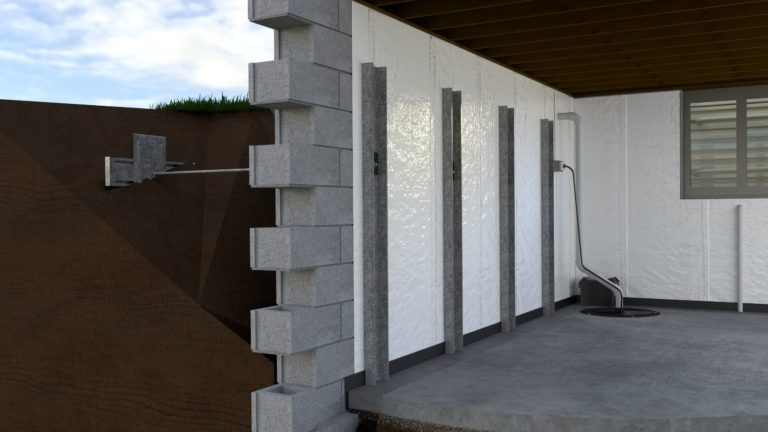
*Sheering means the top of the basement wall has moved inward while the bottom part of the wall stays put.
Fortress Invisibeam Carbon Fiber Straps
Fortress Invisibeam carbon fiber straps can be used for bowing walls and sheering walls. They can be placed vertically or even horizontally, depending on how the wall is bowing.
- First, a galvanized bracket is installed to the top of your house frame.
- Then, the carbon fiber straps are anchored to the wall via epoxy and hundreds of epoxy rivets, creating the strongest bond in the industry.
- Lastly, the strap is anchored to your foundation footer.
- The straps are only 1/4 of an inch wide and can be hidden from sight with just a little paint.
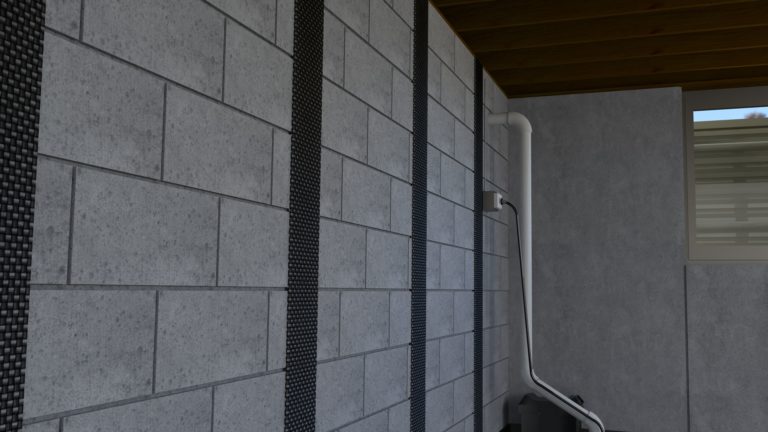
Carbon fiber is an extremely strong fabric material that doesn’t stretch and is virtually unbreakable. Also, Fortress Invisibeam carbon fiber straps can repair walls that have bowed or leaned inwards up to three inches with warranty. Compare that to other carbon fiber systems that can only correct movement up to two inches. The warranty on Fortress Invisibeam carbon fiber straps is the best in the industry. The Real Seal is able to warranty that if the wall fails, they will fix it! Even if that means replacing the entire wall.
Epoxy Crack Injection
Sometimes, your wall will crack if it starts to bow. In this case, professionals like to use epoxy injections to seal and waterproof any cracks. The injection works in two parts.
- First, a surface patch is created using a strong epoxy bonder.
- Then, a 2-part epoxy is injected into the crack, waterproofing and reinforcing your foundation wall.
Read more about foundation crack repair methods.
Helical Tieback Anchors
Helical tieback anchors are a little different than wall plate anchors. The best part about helical tieback anchors is that they don’t require any excavation. Instead of placing an outside anchor in your dirt, they are drilled from inside your bowing foundation wall. The anchor works like a corkscrew. As it twists, it pulls your wall outward, correcting the bowing. Helical tieback anchors are perfect for foundations that have limited interior or exterior access. It’s important to note that The Real Seal does not offer helical tieback anchors.
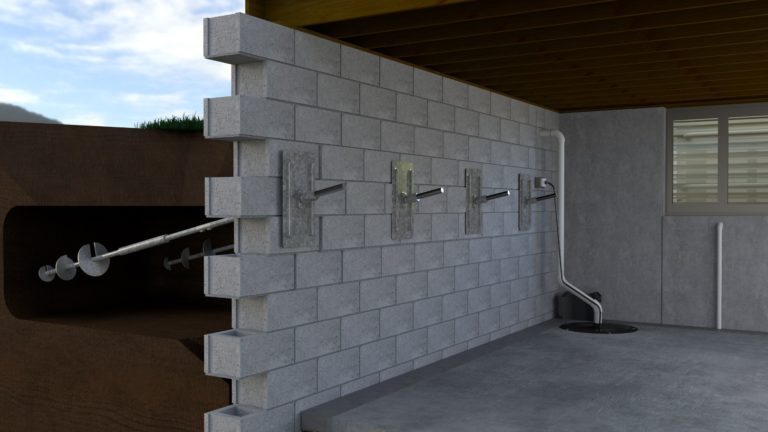
How To Prevent Bowing Foundation Walls
As we mentioned above, expansive soil, hydrostatic pressure, and frost heaving are the main culprits behind bowing foundation walls. Those are all caused by water building up outside your foundation walls. Water causes your soil to expand, puts pressure on your walls, and freezes, lifting your soil. So how do you stop or collect gathering water? A drainage system!
There are different types of drainage systems that all accomplish the same thing.
- You can install an interior or exterior drain tile system that collects water underneath and outside your walls.
- You can place a French drain in your yard to prevent water from pooling up on your property.
- You can extend your gutter downspouts to prevent water from dropping at the base of your foundation.
Read more about foundation drainage systems.
The Real Seal
If you live in the Greater Chicago area and have bowing foundation walls, call The Real Seal. We’ll get you started with an in-depth inspection, free repair estimate, and a list of our finest solutions. We also provide basement waterproofing, crawl space encapsulation, crawl space repair, concrete leveling, and more. Bowing foundation walls are serious. Call today!
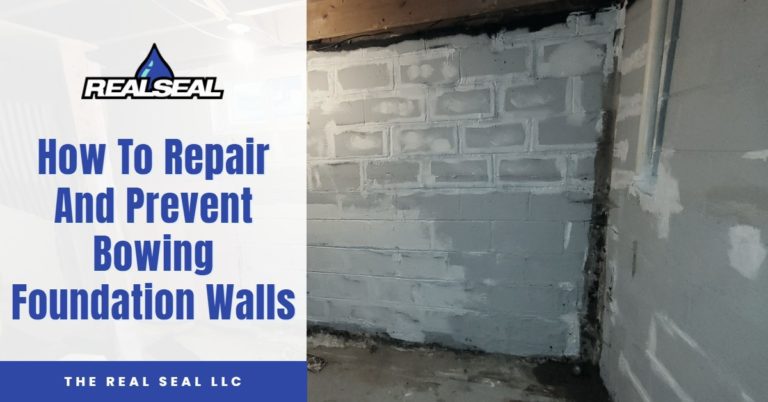
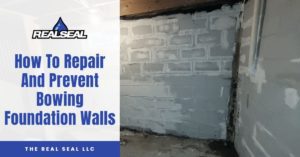





4 Responses
Many thanks with regard to placing this specific article, I used to be searching for it all over the internet and only observed a fair degree of details here.
Thanks so much, we appreciate it!
Hi Austin
Can you message me the typical cost of a C-channel Anchors installation? I was quoted $45k to fix a bowing wall and since insurance doesn’t cover it, I need a different solution!
Hi Luke!
We have some costing videos on our website, but best thing you can do is get multiple quotes from contractors in your area. We would highly recommend Carbon Fiber Straps as the solution, but if you are experiencing bowing that is more significant than stabilization and requires the wall to be pushed back as well, the C-Channel Anchors may need to be used for that project, which does increase the price quite a bit. Where are you located?